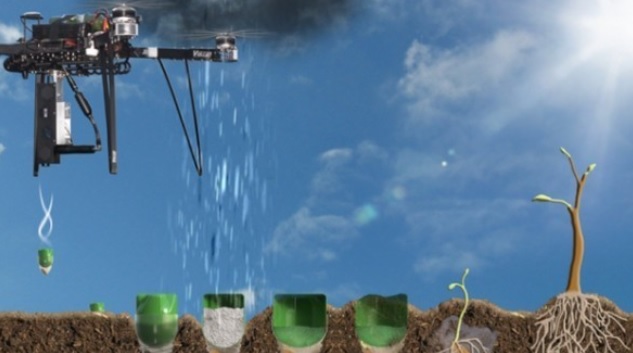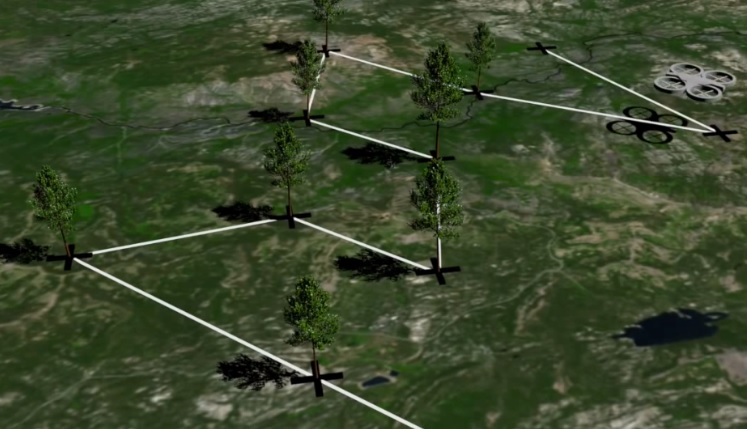Drones to repopulate forests, 1 billion trees at a time
Led by a former NASA engineer, BioCarbon Engineering aims to combat industrial deforestation with a little help from some drones

We often hear about the not-so-good antics that drones – or rather, their operators – are up to. Making their way into a “no fly zone” near the White House, or accidentally injuring a spectator at a popular sporting event. But in many instances, the intentions of those operating drones are noble, and this increasingly popular technology is finding uses in ever-more applications.
Oxford, England-based BioCarbon Engineering intends to use drones to assist in the repopulation of the world’s forests. Truth be told, the future of the world’s tree population looks pretty bleak, unless we do something about it soon. Each year, lumber, mining, development and agriculture deplete approximately 26 billion trees, while only 15 billion are being replanted. That 11 billion (yes, BILLION) tree deficit – ANNUALLY – is going to prove to be a big problem unless those numbers start to turn around.

BioCarbon Engineering, led by ex-NASA engineer Lauren Fletcher, is going to attempt to decrease that number by at least one billion trees each year, and drones will play a key role. Describing what they do as “precision forestry,” BioCarbon Engineering’s drones will carry pressurized air canisters (a la paintball guns) that force the seeds into the soil. This method is proven to be exponentially more effective than aerial seed drops, from which there really is no guarantee that the seeds will take root. And it’s more cost-efficient and less labor-intensive than paying workers to sow one billion seeds by hand.
"First, by planting germinated seeds using precision agricultural techniques, we increase uptake rates. Second, our scalable automated technology significantly reduces the manpower requirements and costs,” Fletcher said in a recent interview. “The only option we’ve had previously has been hand planting, which is slow and really expensive, and just can’t keep up with industrial-scale deforestation.”
So, how does it all work? First and foremost, before any seeds are ever even taken to the site of a seed drop, a scout drone assesses the drop zone and compiles a detailed 3D map of the area, from which the BioCarbon Engineering team plans a seed drop that will maximize success rates. Once a drop zone is selected, the drones mounted with the pressurized air canisters take flight, shooting “rounds” of biodegradable pre-germinated seed pods into the ground. The pods are encapsulated in a “nutrient-rich hydrogel,” which serves a dual-purpose in not only providing a nutritional value to the seeds, but in protecting them as well when they land on impact. At a rate of ten seeds per minute, two drone operators could feasibly plant 36,000 seeds daily – a number that Fletcher says is certainly within the realm of possibility. After germination, the drones are again used in a sort of “scout” capacity, but this time, to monitor the progress of tree growth.
The drones being used to plant up to 1 billion trees annually may look slightly different than the drones we’re used to seeing on television or at small-scale events. Considering that these drones have to carry equipment that weighs up to 18 pounds, the drones being employed by BioCarbon Engineering have been designed and built by “drone experts” at VulcanUAV, who have designed these particular drones to be more “muscular” and able to hold a significant amount of weight.
As for a timeline, BioCarbon Engineering is looking to conduct trials later this year, so these tree-planting drones could be repopulating the world’s forests as early as next year.
Via ZME Science and Inhabitat
Learn more about Electronic Products Magazine
http://www.electronicproducts.com/Aerospace/Aircraft/Drones_to_repopulate_forests_1_billion_trees_at_a_time.aspx